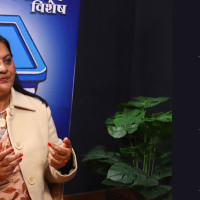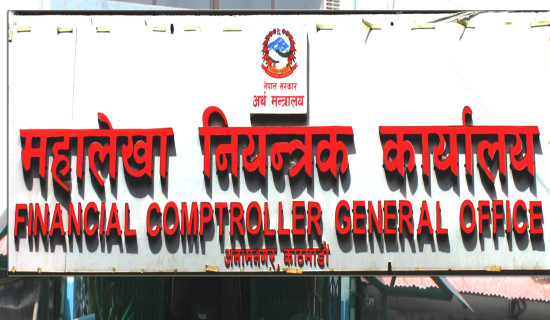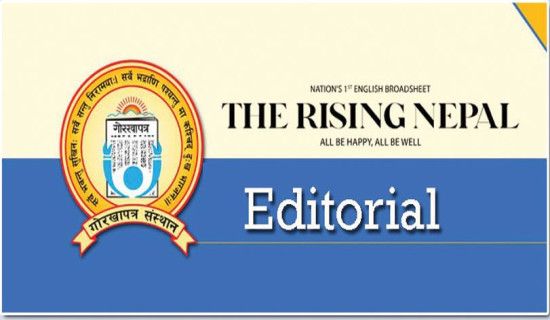- Tuesday, 16 December 2025
Need For Introducing Online Voting
Recently, the Election Commission of Nepal published its election timetable for the upcoming House of Representatives election to be held in March 2026. People are expecting the spirit of the youths to be reflected in the timetable for the elections, as this election is the result of recent Gen Z protests in Nepal.
However, no detailed schedule has been made public; the timetable seems to be a traditional one, just focused on voter registration, party registration, establishing and operating offices of retaining officers, campaigning period, silent period, voting time, and so on. This tends to imply indifference towards the driving zeal of the Gen Z protest and the need of Nepali people to conduct elections in user-friendly, easy, cost-effective and swift manners.
Technology in elections
The EC seems to be a technology-friendly institution because it initiated digital biometric voter registration, and in later times, it began online voter registration. These initiatives are really appreciated by the people and the commission might have used its legal leverage to propel technological advancement in elections. Clause 34 of the Election Commission Act 2017 assures that the commission can use new technology in elections. Regarding both the legal base and its pro-activeness, the upcoming election tends to be an opportunity to introduce new voting technology, as the current government is also framed for electoral purposes.
The need for online voting options can be felt with reference to the census report 2021, which states that about nine million Nepali people have emigrated from their native places. As per the latest voter registration data, the commission has a voter registry of about eighteen million voters. This highlights the urgent need to address the concerns of temporary and permanent migrants in the electoral process.
Similarly economic survey of 2080/81 shows that about 800,000 students are studying in different universities, 885,000 are listed as unemployed people, and about 322,000 registered companies across the country. These figures demand online voting options, as they tend to be mostly youth residing away from their permanent residences. The traditional approach to voting may not address the concerns of these youths, as they may not get a leave to travel to vote. If these concerns are disregarded, consequences seen in previous elections, such as a low voter turnout of only 50-60 per cent, are likely to be seen this time as well.
In a country like Nepal, where the road access is rudimentary, reaching a destination in time is unpredictable, and travel costs are also high. So, youths who are tech savvy have sought a rethinking of voting options. In the past, some political parties or candidates were reported to have funded the transportation cost of their voters, but this practice affects free, fair and credible elections, and also promotes the power of money in politics. All these factors make the online voting option logical.
Nepal has adopted a mixed parallel electoral system comprised of first-past-the-post (FPTP) and proportional representation (PR). Within this system, 165 candidates are elected from 165 constitutes and 110 candidates from across the country. This means, like in the past, voters vote in two ballot papers - one for FPTP and the other for PR, requiring multiple logistics such as different ballot boxes, stamps, packing, forms, and so on. This affects the election cost. Going online significantly reduces such costs in logistics.
In contemporary times, voting from abroad is also in discussion; however, it needs national diplomatic and resource capacity while making online voting available inside the country. This doesn’t tend to be challenging as Nepal has its own software companies, electoral database systems, and experts to manage them. One easy, safe, and cost-effective way could be to prepare a list of online voting preferences, separate their list, and instead of sending their voting list to physical voting centers, give them a secure online voting link, and allow them to vote on Election Day along with an OTP code on their mobile number. This option tends to reduce not only the cost but also the headache in counting the ballots and declaring the result in time.
Constraints
Regarding constraints in using technology in elections, these are often related to trust in elections, objections of political parties, literacy of voters and limited resources. These tend to be just the pretext. As for trust, all the political parties have been using digital campaigning strategies in elections, banking transactions in their economic activities, as well as people are familiar with digital payments. Regarding the question of the literacy of voters, only registered voters who can use digital technology are provided with online voting options. As for resources, systems can be developed within Nepal, mobilizing its own resources.
Political parties also want a fast, easy and reliable way of voting and have already realized the power of digital technology reflected in the Gen Z protest. Finally, regarding age, spirit of the youth, mandates of the current government, mobility of the people, economic efficiency and technical feasibility, as well as legal possibilities, online voting options in the upcoming elections is feasible and necessary.
(The author is an engineer.)
















